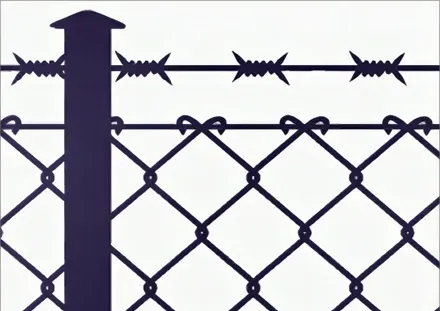Temporary Fencing for Construction Sites Ensuring Safety and Security
Temporary fencing is an essential component of construction site management, playing a pivotal role in enhancing safety, security, and organization on-site
. As construction projects range from small renovations to large-scale developments, implementing effective barriers is crucial to prevent unauthorized access and protect workers, pedestrians, and equipment.One of the primary purposes of temporary fencing is to delineate the construction area clearly. By cordoning off the site, contractors can control the flow of foot traffic and minimize the risk of accidents. This is especially important in urban environments where construction sites are often located near public spaces. Proper signage can accompany the fencing to provide clear instructions and warnings, further ensuring the safety of both the workforce and the general public.
Moreover, temporary fences deter theft and vandalism, which can be costly for contractors. Construction sites are often filled with valuable equipment and materials, making them attractive targets for thieves. A sturdy temporary fence acts as a physical barrier, making it more challenging for unauthorized individuals to access the site. In addition to physical fencing, surveillance cameras can be integrated into the security system, enhancing overall monitoring and response capabilities.
temporary fence for construction site

The versatility of temporary fencing materials is another significant advantage. Options range from chain-link fences to plastic barriers and even wooden panels, allowing contractors to choose the most appropriate type based on the specific needs of the site and local regulations. Chain-link fences, for instance, offer visibility while maintaining a robust barrier, whereas solid panels provide privacy and sound dampening in densely populated areas.
Installation of temporary fencing is typically quick and straightforward, minimizing delays in project timelines. Construction companies often rent or lease fencing materials, which helps reduce costs and allows for flexibility as the project progresses. Once the construction is complete, the fencing can be easily dismantled and removed, ensuring that the site is restored to its original condition.
In conclusion, temporary fencing for construction sites is not merely a regulatory compliance measure; it is a fundamental aspect of site management that prioritizes safety and security. By effectively managing access, deterring criminal activity, and defining work areas, temporary fencing contributes significantly to the smooth operation of construction projects. As the industry evolves, the integration of technology and innovative materials will further enhance the effectiveness of these crucial safety barriers.
-
Why Galvanized Trench Cover Steel Grating Resists Corrosion
NewsJul.10,2025
-
The Versatility and Strength of Stainless Expanded Metal Mesh
NewsJul.10,2025
-
Load Calculations in Steel Grating Platforms
NewsJul.10,2025
-
Keeping Pets and Kids Safe with Chicken Wire Deck Railing
NewsJul.10,2025
-
Hole Diameter and Pitch for Round Perforated Metal Sheets
NewsJul.10,2025
-
Aluminium Diamond Mesh in Modern Architecture
NewsJul.10,2025
Subscribe now!
Stay up to date with the latest on Fry Steeland industry news.

